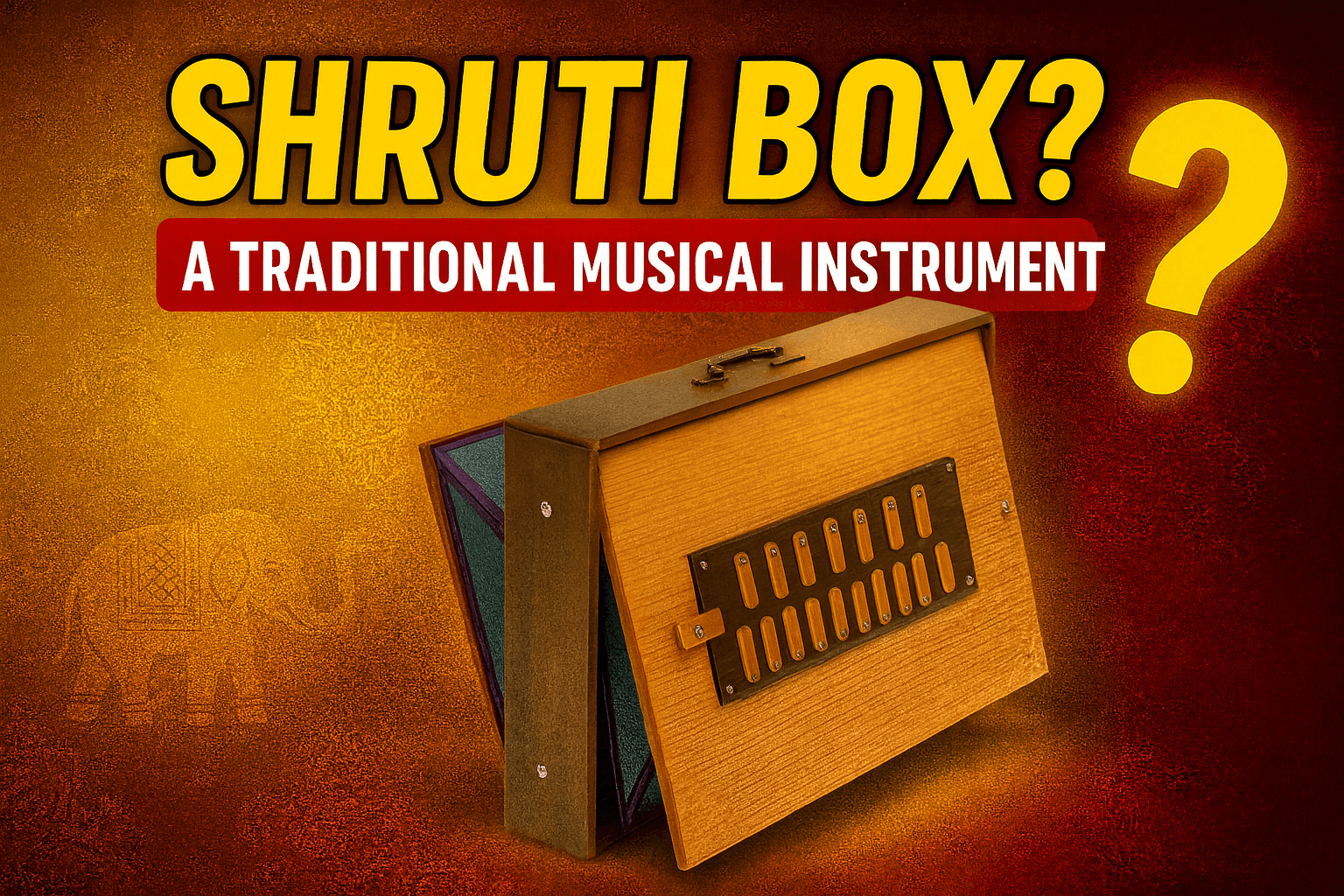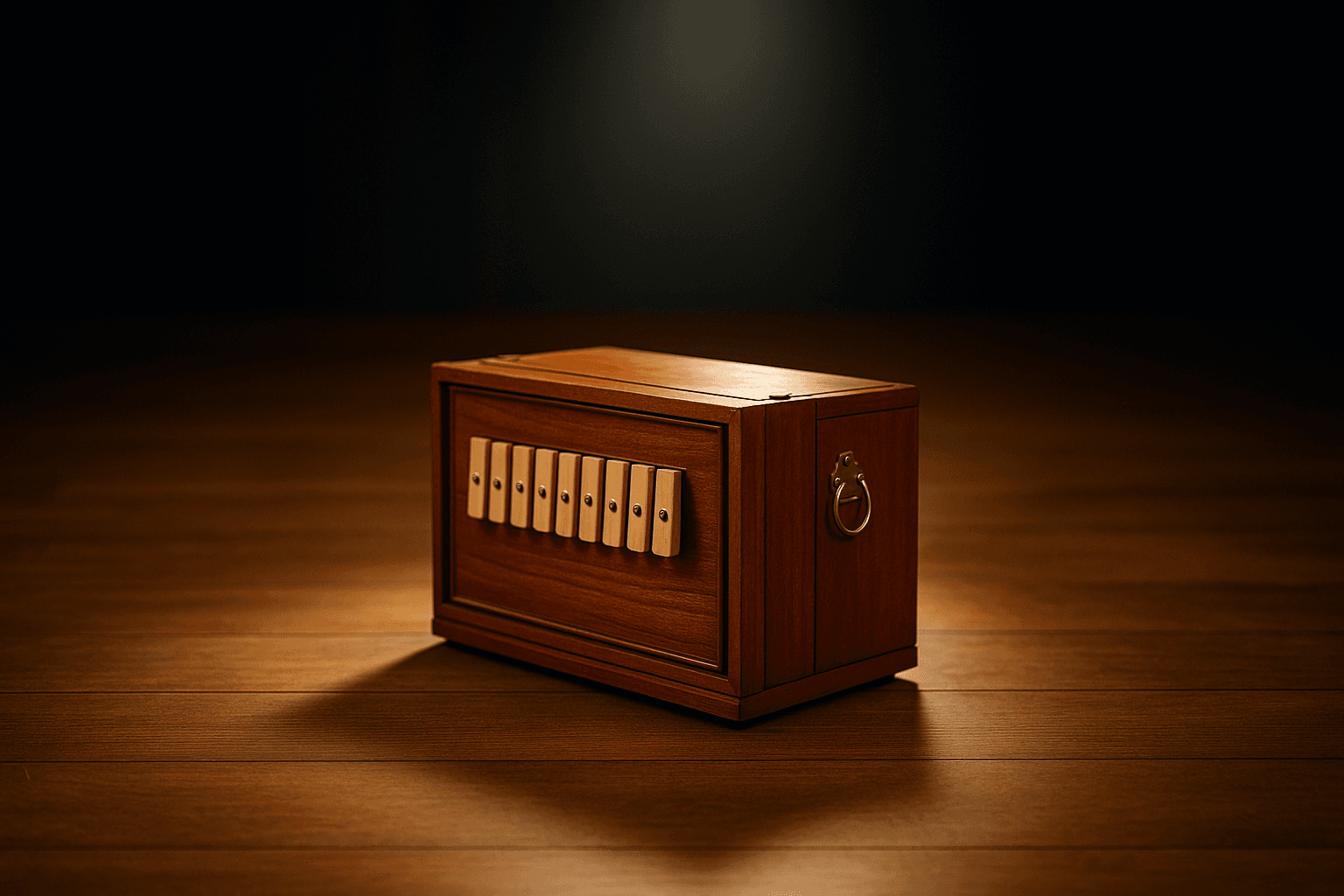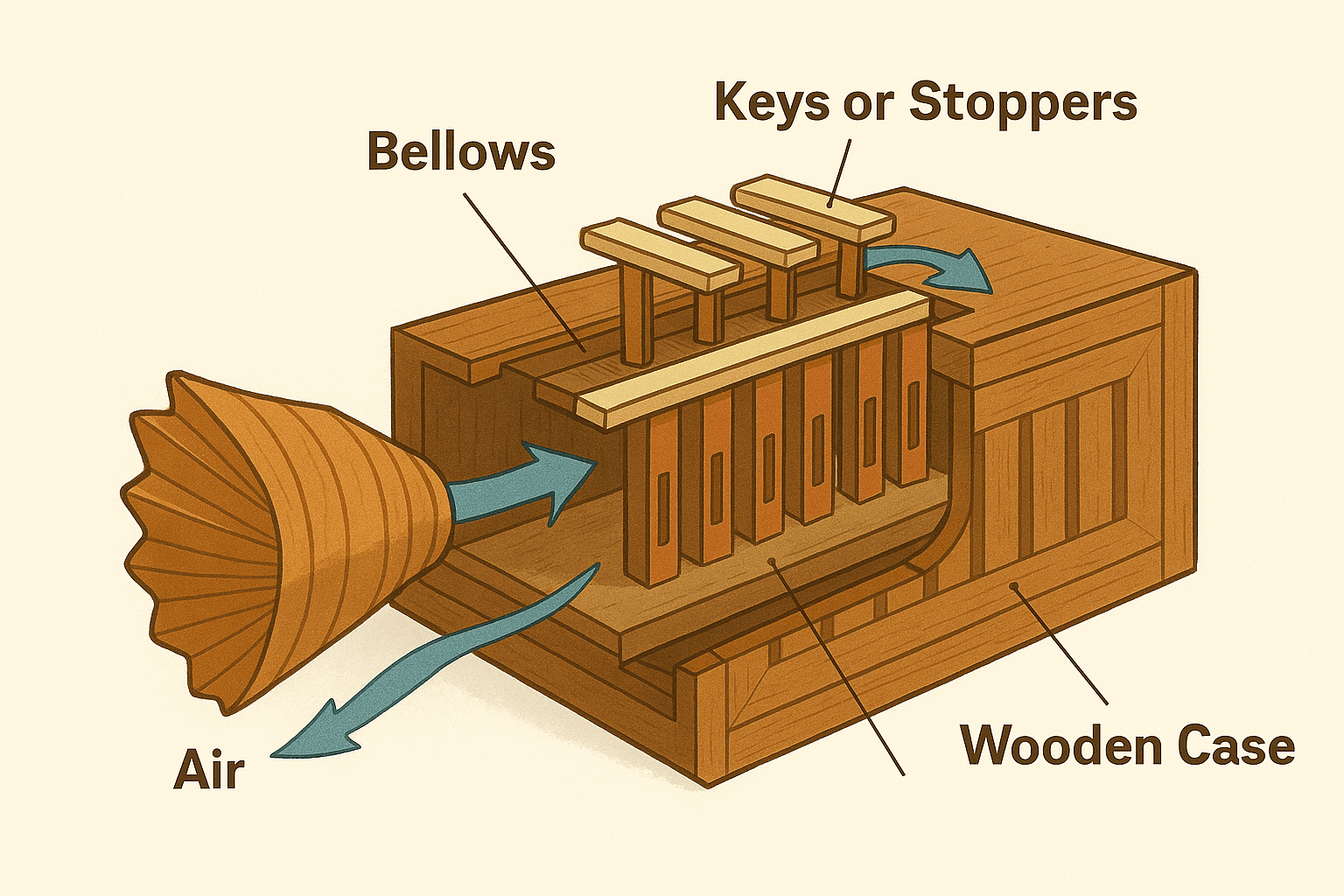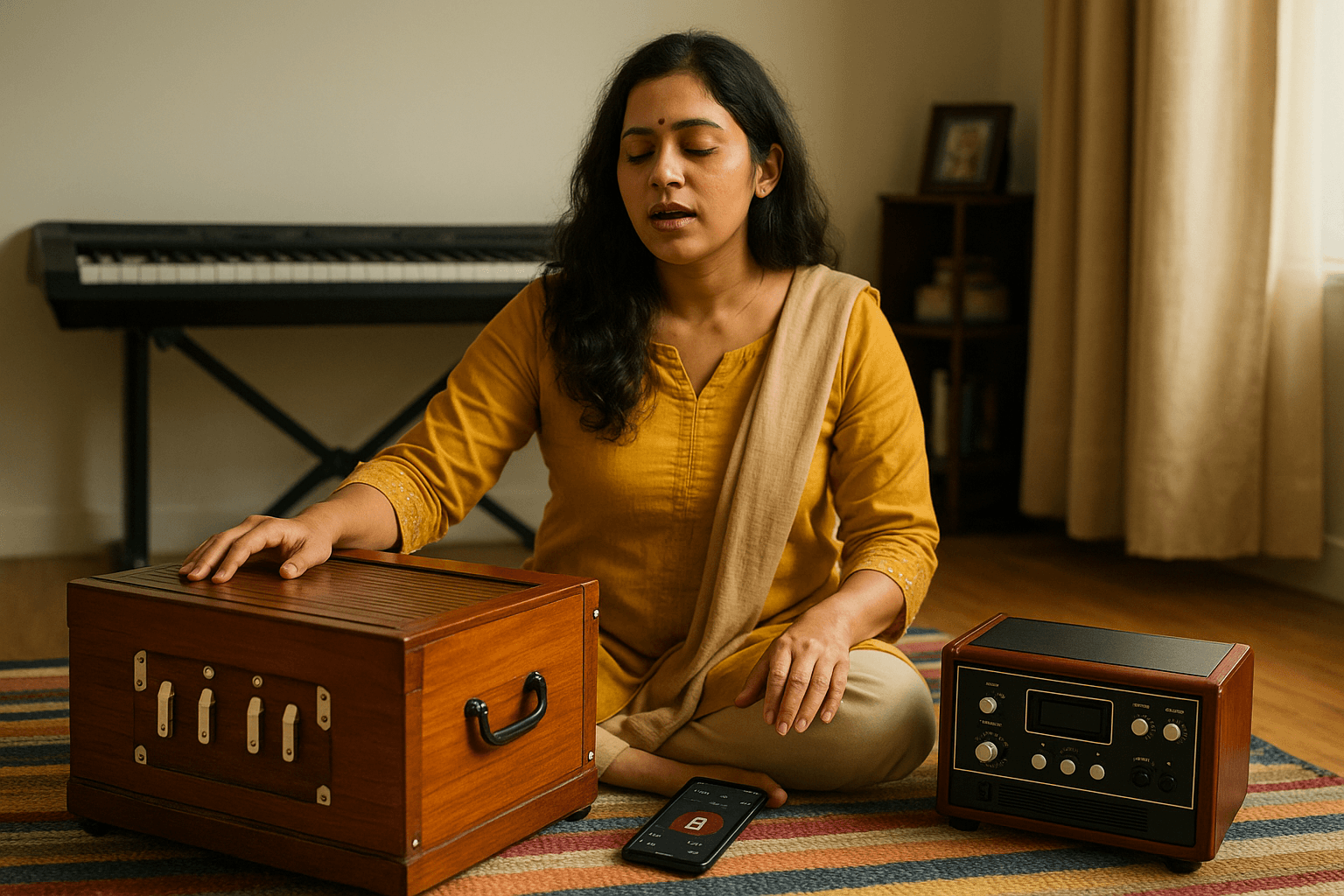
Art Gharana — 10 Mins read
Guitar Anatomy: Complete Guide to Different Parts of a Guitar
Musical Instruments
 When you think of Indian classical music, what’s the first image that comes to mind? For many, it’s the soulful sound of a vocalist setting the tone with a steady drone in the background. That gentle, continuous hum doesn’t come from a full orchestra—it comes from a humble yet powerful instrument known as the Shruti Petti or shruti box instrument.
When you think of Indian classical music, what’s the first image that comes to mind? For many, it’s the soulful sound of a vocalist setting the tone with a steady drone in the background. That gentle, continuous hum doesn’t come from a full orchestra—it comes from a humble yet powerful instrument known as the Shruti Petti or shruti box instrument.
For centuries, the shruti box has been an inseparable part of Carnatic music and Hindustani music, guiding singers and instrumentalists with perfect pitch and harmony. Though simple in design, this traditional shruti instrument has shaped the way Indian music is practiced, taught, and performed across generations.
In this blog, we’ll journey into the origins of the shruti petti, explore how it works, and understand why it continues to hold relevance even in today’s digital age. Whether you’re a curious learner, a music enthusiast, or someone discovering Indian music instruments for the first time, this guide will give you a fresh appreciation for the role of the shruti box in keeping tradition alive.
So, are you ready to discover how a seemingly modest instrument can carry the weight of centuries of musical heritage? Let’s begin.
 Have you ever wondered why the Shruti Petti holds such a sacred place in the world of Indian classical music? While it may look simple, this small shruti box instrument carries centuries of tradition, serving as the unshakable foundation for vocalists and instrumentalists alike.
Have you ever wondered why the Shruti Petti holds such a sacred place in the world of Indian classical music? While it may look simple, this small shruti box instrument carries centuries of tradition, serving as the unshakable foundation for vocalists and instrumentalists alike.
The origins of the shruti petti trace back to the rich musical practices of South and North India. In Carnatic music, singers rely on the steady drone of the shruti box to maintain their pitch, while in Hindustani music, it creates the tonal atmosphere for raga performances. This humble companion doesn’t just provide sound—it nurtures precision, discipline, and emotional depth.
Musicians across generations embraced the shruti box for three key reasons:
Interestingly, the shruti box became more than just an instrument—it turned into a symbol of devotion and discipline. For many, opening the bellows of the shruti petti before practice feels like a ritual, a way of aligning oneself with centuries of tradition.
Even as technology has evolved, the shruti petti remains a beloved presence in classrooms, temples, and concert halls. It reminds us that the true strength of music lies not in complexity but in purity and continuity.
So, when you listen to that soothing drone, you’re not just hearing a sound—you’re experiencing a living piece of history, one that connects you to the heart of Indian music itself.
 At first glance, the shruti box may seem like a simple wooden case, but have you ever wondered how such a modest-looking instrument produces that rich, continuous drone? The secret lies in its design and the way air interacts with its internal components. Let’s break it down.
At first glance, the shruti box may seem like a simple wooden case, but have you ever wondered how such a modest-looking instrument produces that rich, continuous drone? The secret lies in its design and the way air interacts with its internal components. Let’s break it down.
The shruti instrument is built with precision, each part playing a vital role in creating its signature sound:
Here’s the process in simple terms:
This mechanism makes the shruti box a reliable guide for maintaining pitch accuracy during practice or performance.
Not all shruti boxes are the same. Some are compact, designed for travel, while others are larger with deeper resonance. Traditional hand-crafted models often have superior tonal quality, while modern versions offer smoother mechanics and easier tuning. For learners exploring Indian music instruments, choosing the right type of shruti box can make practice sessions more enriching.
What makes the shruti box truly remarkable is its balance between simplicity and power. Unlike complex instruments that demand years of training, the shruti petti provides instant value—just a few pumps of the bellows, and you’re ready to sing or play in tune.
In many ways, this little box is less about showing off technical mastery and more about supporting the soul of Indian classical music. It’s a quiet yet dependable partner for every musician.
 In today’s fast-paced digital world, you might wonder—does the shruti petti still hold its place in music practice and performance? The answer is a resounding yes. Despite modern technology offering countless alternatives, the shruti box continues to thrive as both a traditional and evolving companion in Indian classical music.
In today’s fast-paced digital world, you might wonder—does the shruti petti still hold its place in music practice and performance? The answer is a resounding yes. Despite modern technology offering countless alternatives, the shruti box continues to thrive as both a traditional and evolving companion in Indian classical music.
The steady drone of a shruti music box remains unmatched in its ability to:
While the classic wooden shruti box is still cherished, technology has introduced new ways to experience it. Today, you can find:
Mobile Apps – Providing the drone sound at your fingertips.
Shruti Box Online Options – Easy access for learners abroad who may not find traditional instruments locally.
This evolution has made the shruti instrument more accessible than ever, ensuring its role continues in classrooms and living rooms worldwide.
What makes the shruti box so remarkable is its ability to adapt without losing authenticity. Whether you’re a beginner exploring Indian music instruments or an advanced vocalist, it provides the same grounding force that maestros have trusted for centuries.
The lesson here? Tradition doesn’t have to fade with modernity. Instead, like the shruti petti, it can evolve gracefully—keeping the essence of Indian classical music alive for future generations.
The journey of the shruti petti reminds us that music is not just about performance—it’s about connection, discipline, and tradition. From its role in Carnatic music and Hindustani music to its modern adaptations as a shruti box online or electronic version, this humble instrument continues to guide learners and professionals alike.
But here’s the real question—what about you? Are you ready to experience how the soothing drone of the shruti instrument can transform your practice and deepen your understanding of Indian classical music?
If you’ve ever wanted to explore your musical roots or refine your pitch, now is the perfect time. At Art Gharana, you can begin your journey with expert guidance through our Online Carnatic Vocal Classes.
And the best part? You don’t have to commit right away. Simply book a free trial class to discover the magic of learning with the support of experienced teachers and the timeless resonance of the shruti box.
Music is waiting—are you ready to let tradition and modern learning come together in your voice?